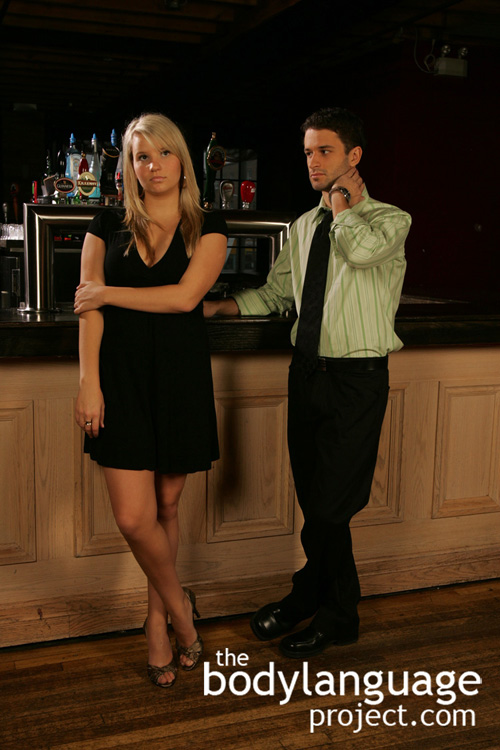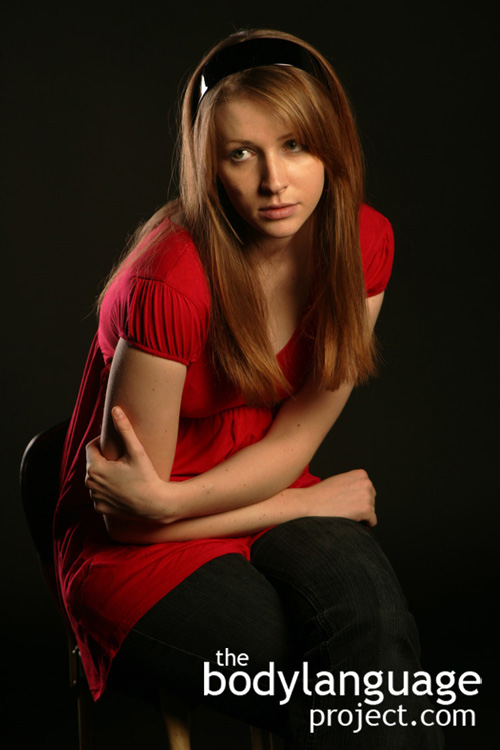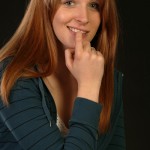An extreme form of closed posture is the fetal position. While it might seem far fetched to expect someone in your company to have this posture, it does occur although in more abbreviated adult acceptable ways. While at an informal party, for example, a women in might find herself hugging her knees at the end of a couch. To her, this feels comfortable, which is why she does it, but it reveals her true emotions. When in a public she is timid and reserved so she curls up in a ball. The abbreviated form of this position, of course, and one that is more acceptable in public is to pull the limbs in closer to the body and across the center-line as in the “self hug”. With age, we learn that taking up the fetal position, like thumb sucking, is not an acceptable way of dealing with our insecurity so we drop the extreme form of the gesture in favour of more subtle cues. Playing with the hair, rolling it around a finger, sucking on it, or a pen, or other oral fixations are also juvenile coping behaviours that become unacceptable, although often still continue, into adulthood.
Tag Archive for Subtle Cues
Introduction – Chapter 7
by Chris Site Author • March 5, 2013 • 0 Comments
Openness can sometimes be confused with simply being relaxed or intense, and to some degree this is true. For example, being open often means that attire is also relaxed, shirt collars are unbuttoned, ties removed, the pants might hang loose and certain articles like jackets might be removed. Full openness, therefore, is not always acceptable. Conversely, we might look at being open as simply a lack of holding closed cues. That is, having open cues is the exact same as not displaying closed cues and is the default position of the two. Being closed requires a certain amount of tensing of muscles and therefore effort so the default of most people is having an open mind. In other words, people are open, unless they say otherwise! It follows that there are far fewer cues to symbolize openness as opposed to closed, since being open is more of a passive state.

Closed body language happens whenever a part of our body crosses the center-line. Arms are shields that protect our torso from harm.
When closed postures are combined with other closed postures, the signal intended is made more obvious. For example, leg crossing in combination with arm crossing is much more potent than either alone. Add to this an expressionless face, turning away, and one is left to assume that communication is not welcomed at any level. On the other hand, we might be faced with someone who has their legs crossed but the arms are opened and honest. In this case, we might assume that it is a deliberate and conscious attempt to appear relaxed, when in fact the person might not be relaxed at all. It might be the case too, that someone has mixed feelings and is reserved at one level, but open at another level. Reading opened and closed body language is tricky business, but all cues are additive. Cues of the same origin, happening together, serve to strengthen an open or closed reading, but so too does conflicting cues. Conflicting cues tell us that someone has an internal reservation, made obvious through their mixed message.
It is fortunate for those of us who wish to modify our body language, that we have control of our conscious mind, since we then can modify our body language as desired.
Of course, since de-linking of our bodies and minds is difficult, these changes bring about inherent change in our attitudes as well. For example, it’s fairly easy to consciously carry open postures, such as palms up, arms and legs uncrossed, and hold active eye contact, however holding these postures necessarily leeches back into us creating open feelings.
In this chapter we will examine the vast array of open and closed body positions that we can use to come across as more or less open, as we desire. Naturally too, we will be able to identify this same body language in other people and use it to our advantage when reading them.




